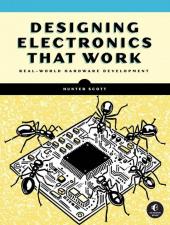Acknowledgments
Introduction
PART I: PLANNING
Chapter 1: What to Build and How to Plan for It
Chapter 2: Component Specifications and Purchasing
Chapter 3: Selecting Passive Components
Chapter 4: Selecting Active Components
PART II: DESIGNING
Chapter 5: Schematic Design
Chapter 6: Layout Design
Chapter 7: Design For Excellence
Chapter 8: Electromagnetic Compatibility and Immunity
Chapter 9: Cost Engineering
PART III: BUILDING
Chapter 10: Prototyping
Chapter 11: Building a Lab
Chapter 12: Fabrication and Assembly
Chapter 13: Testing
Chapter 14: Troubleshooting
Appendix A: How to Give a Demo
Appendix B: Recommended Resources
Appendix C: Example Fabrication Notes
The chapters in red are included in this Early Access PDF.
View the Copyright page View the detailed Table of Contents View the Index

